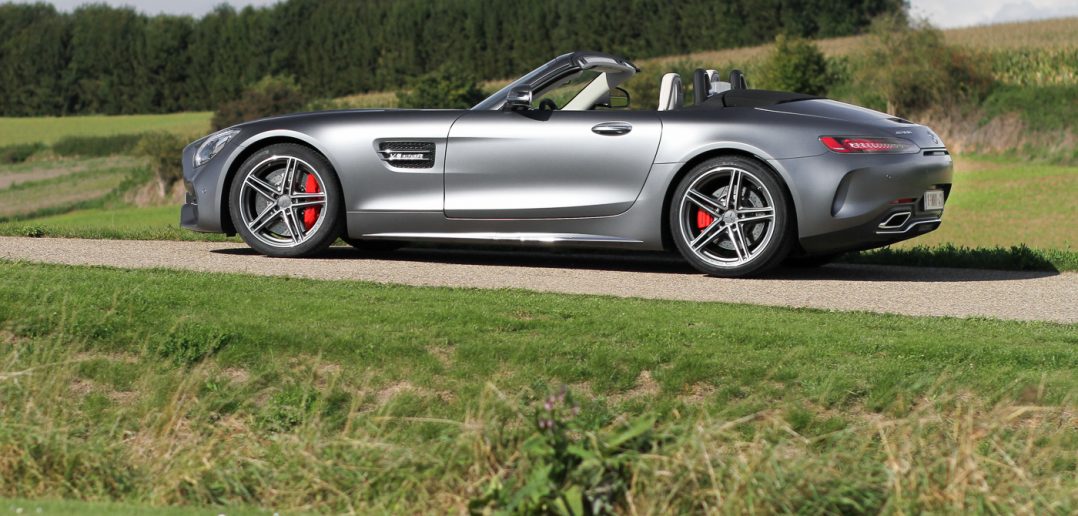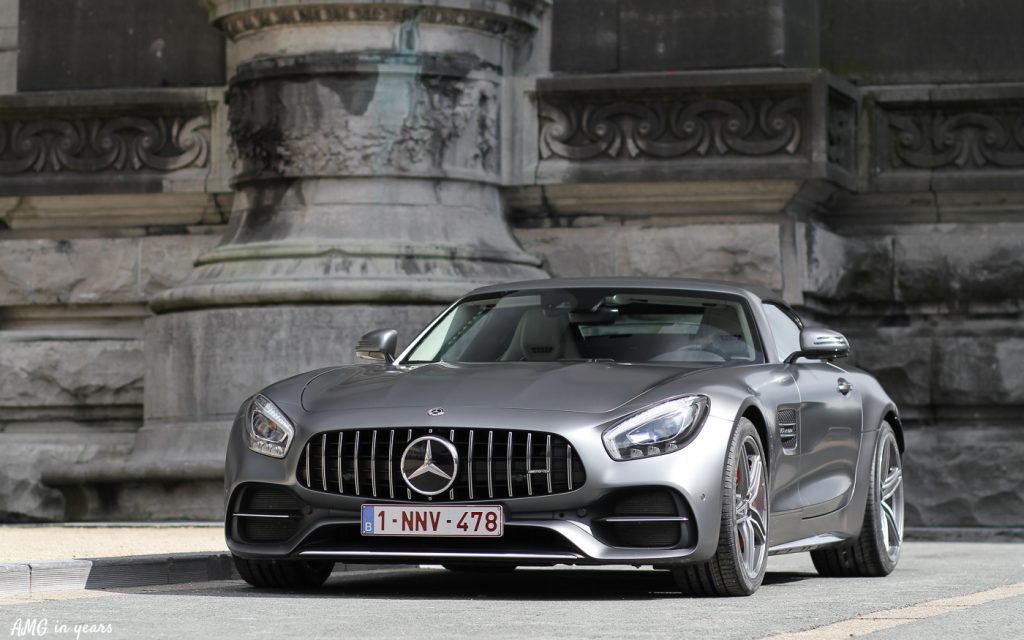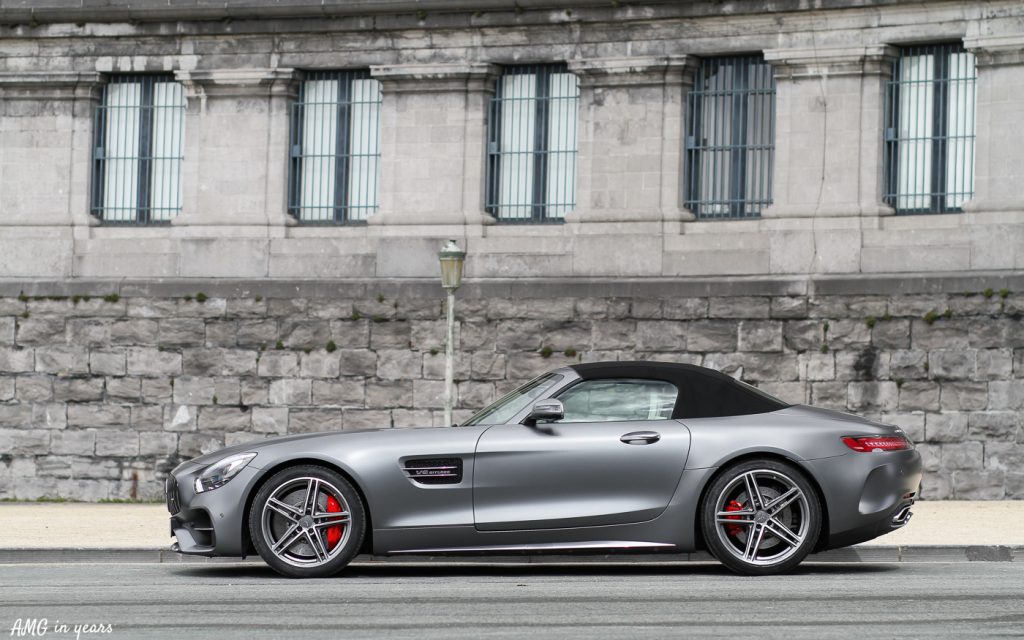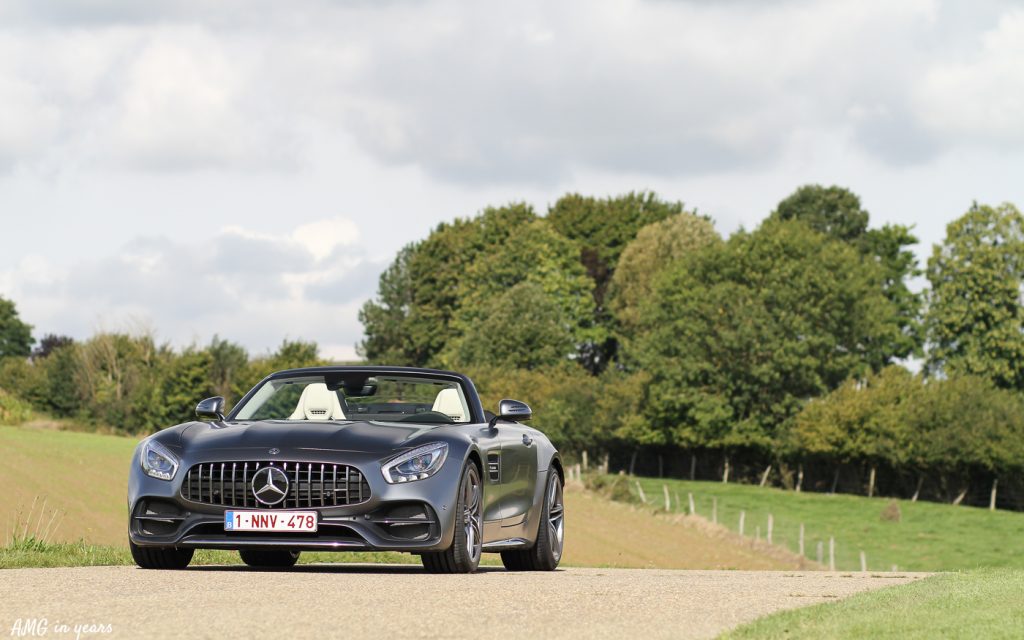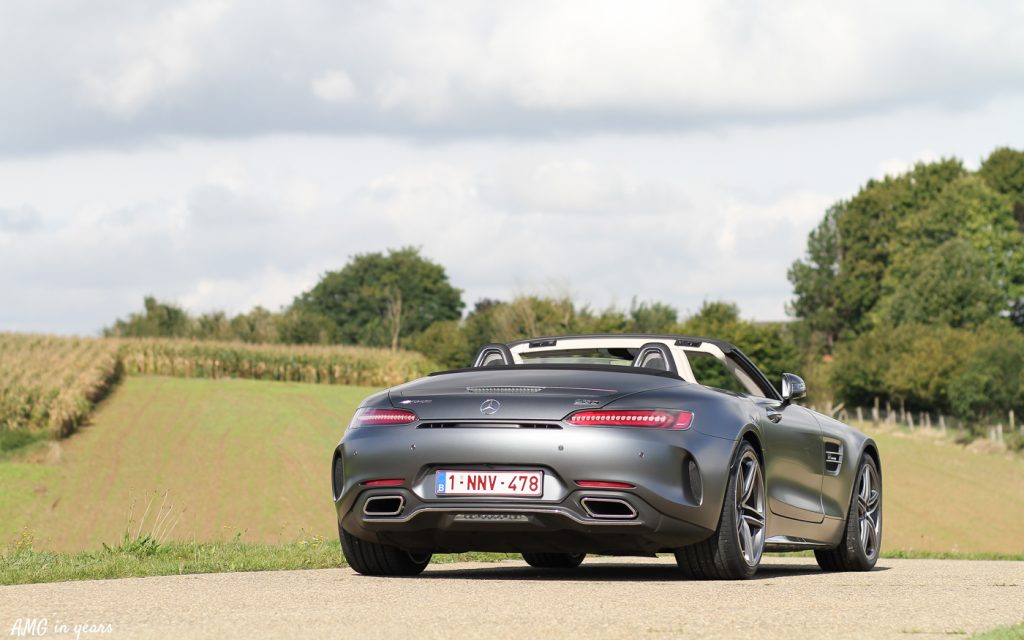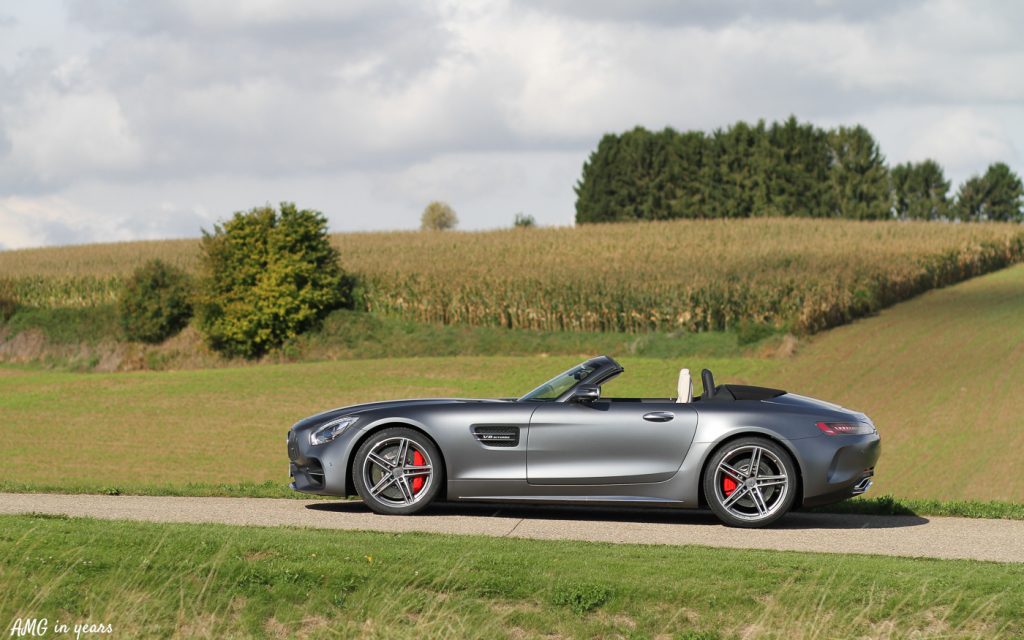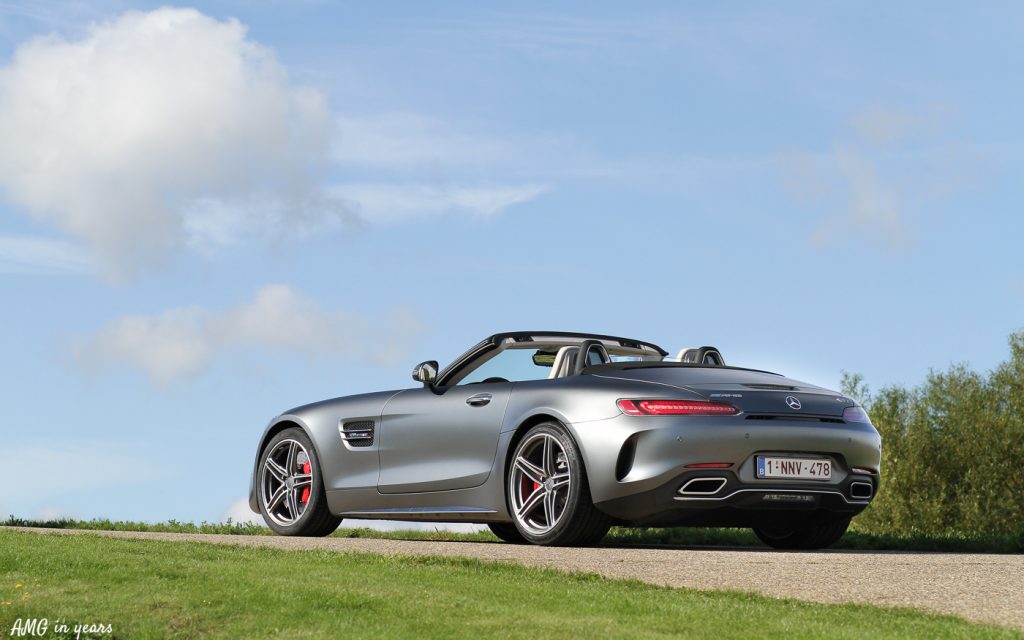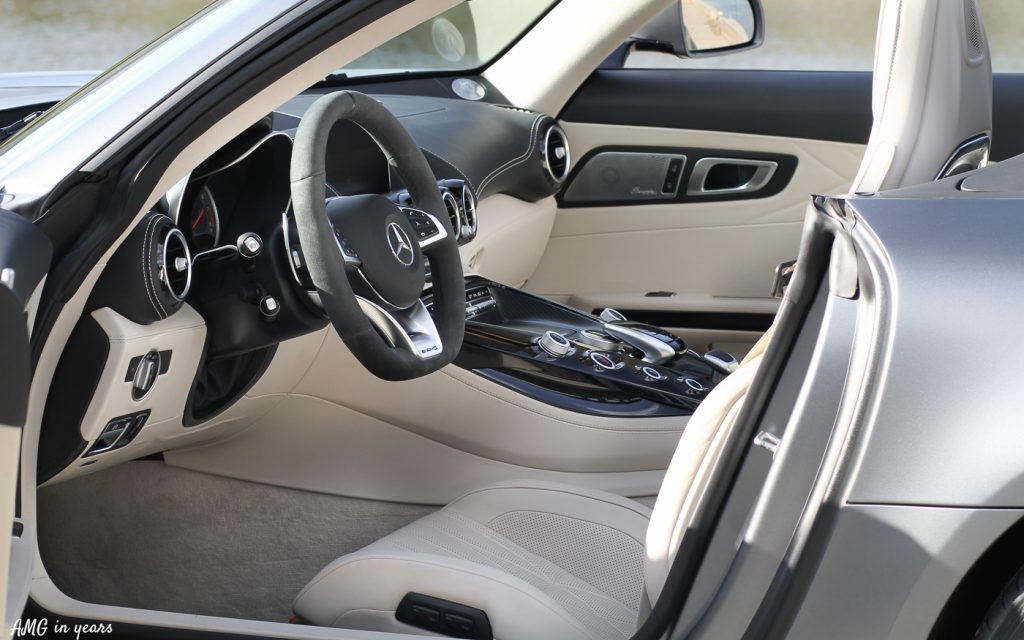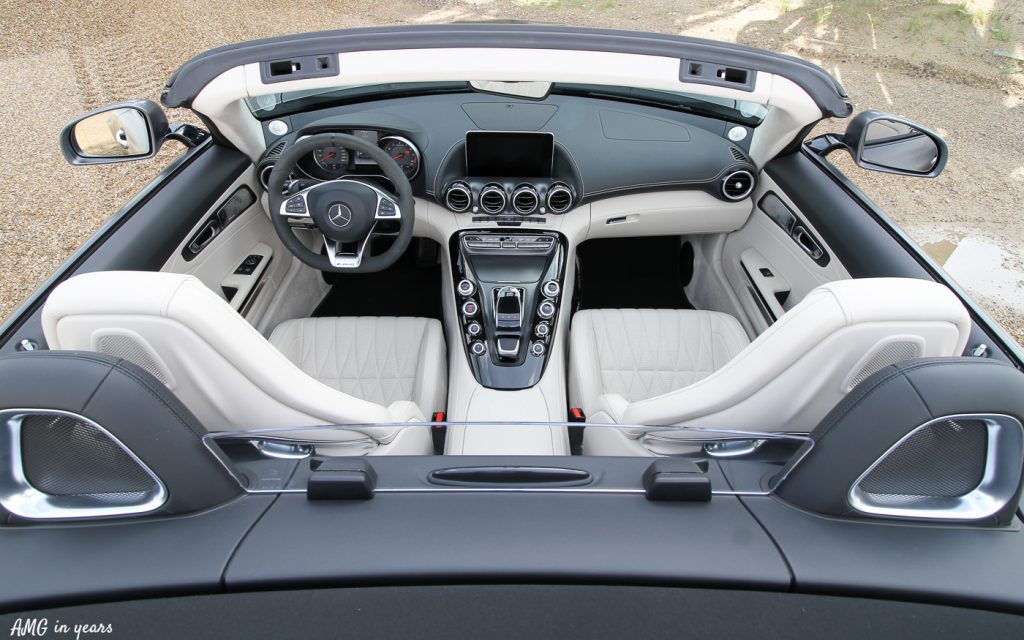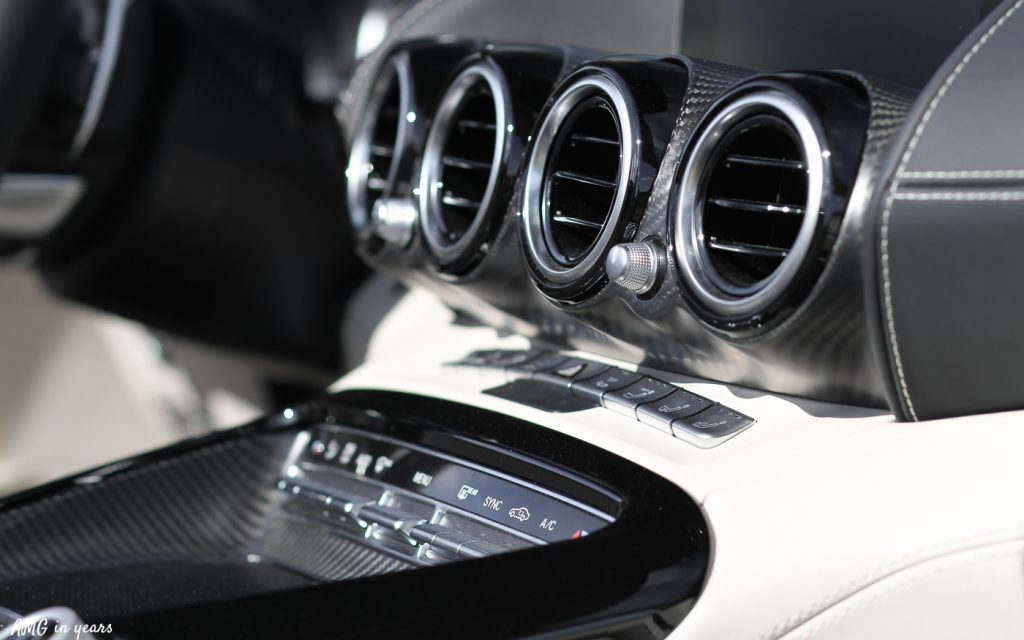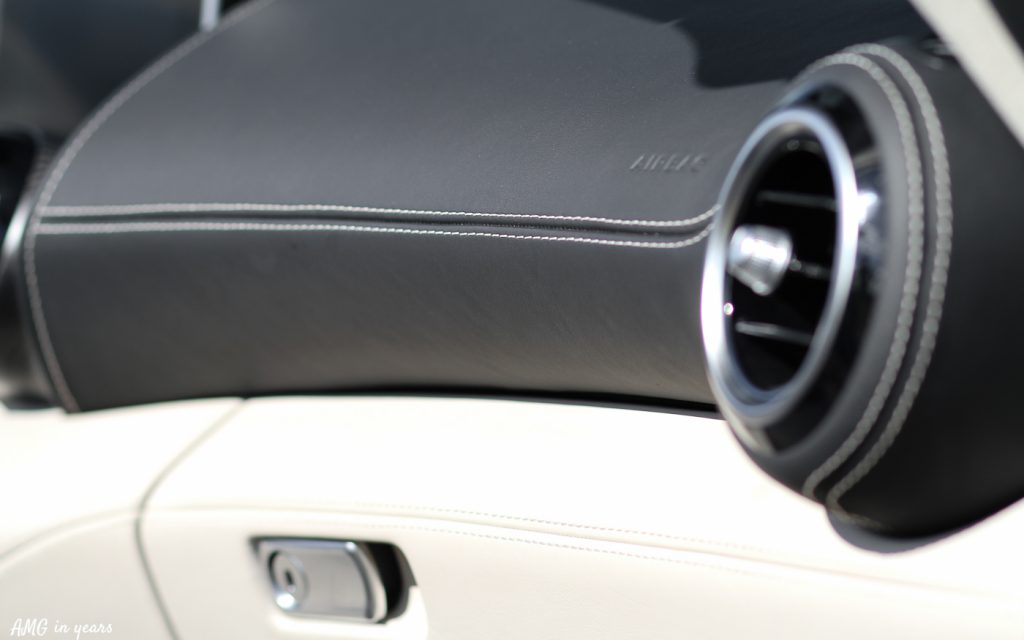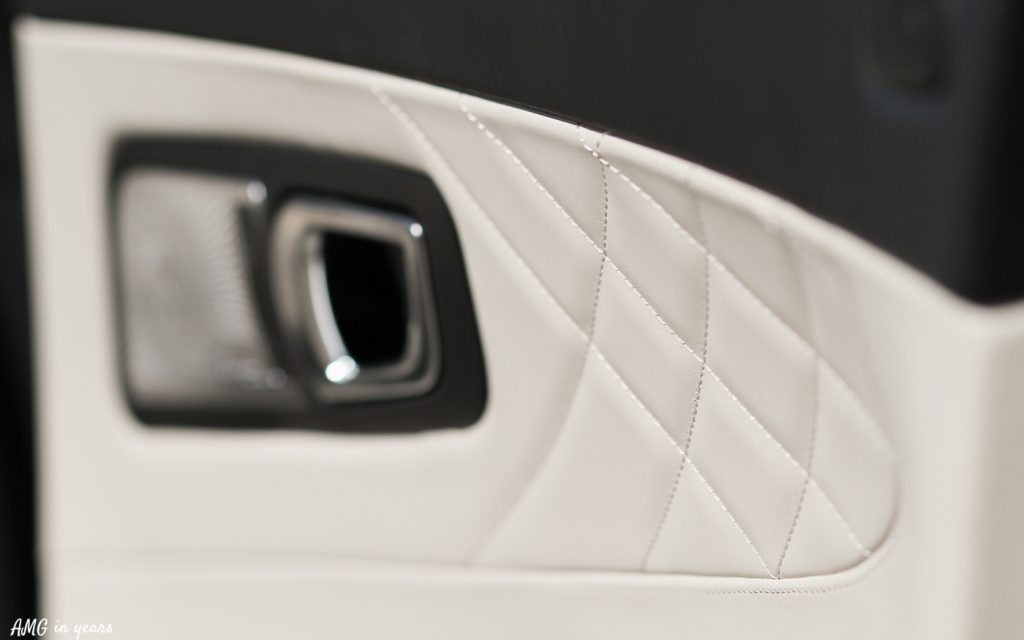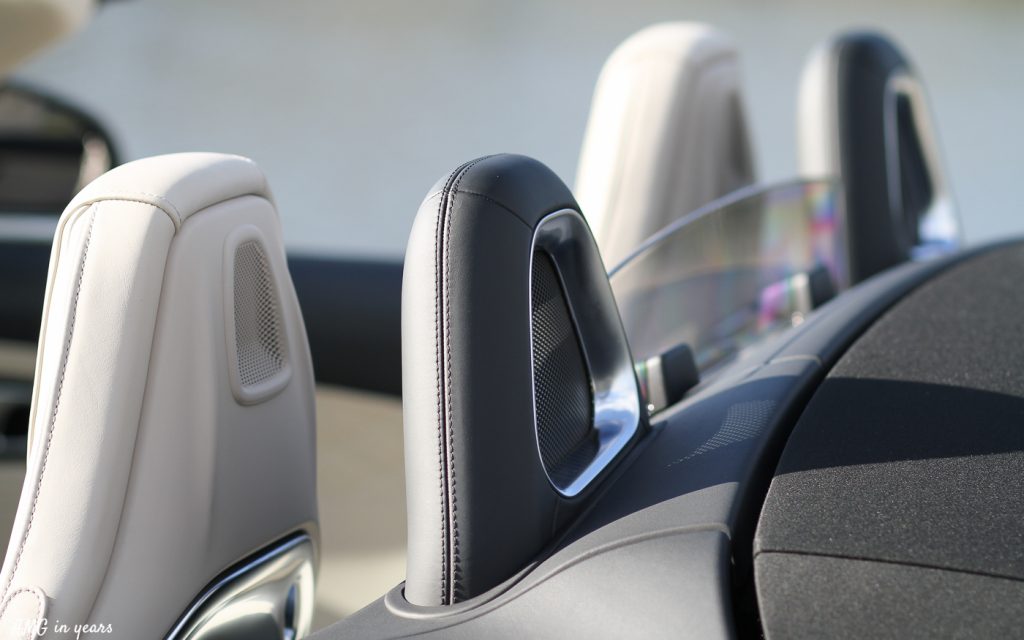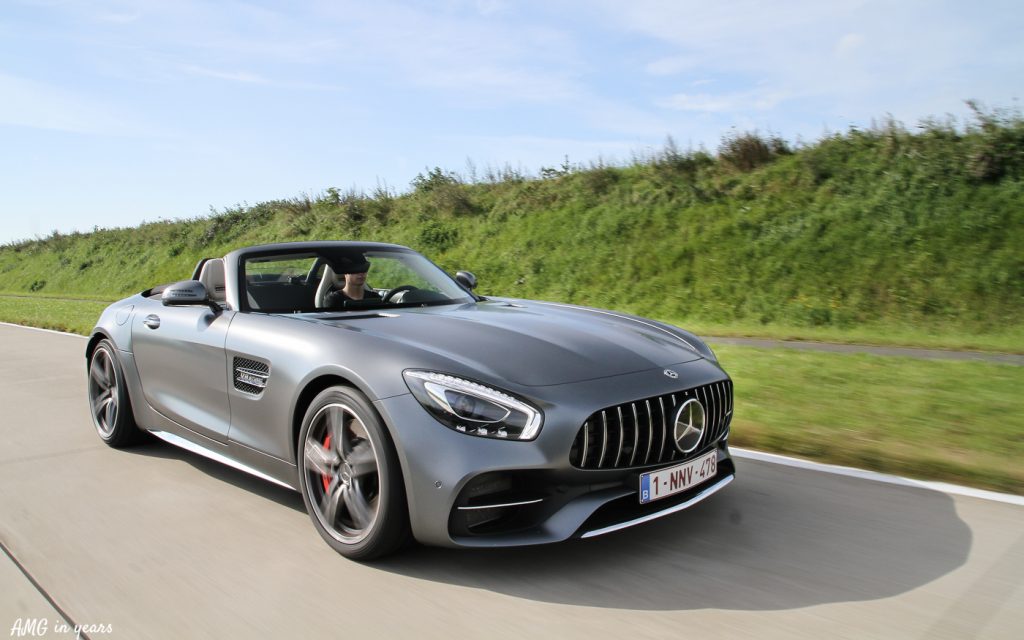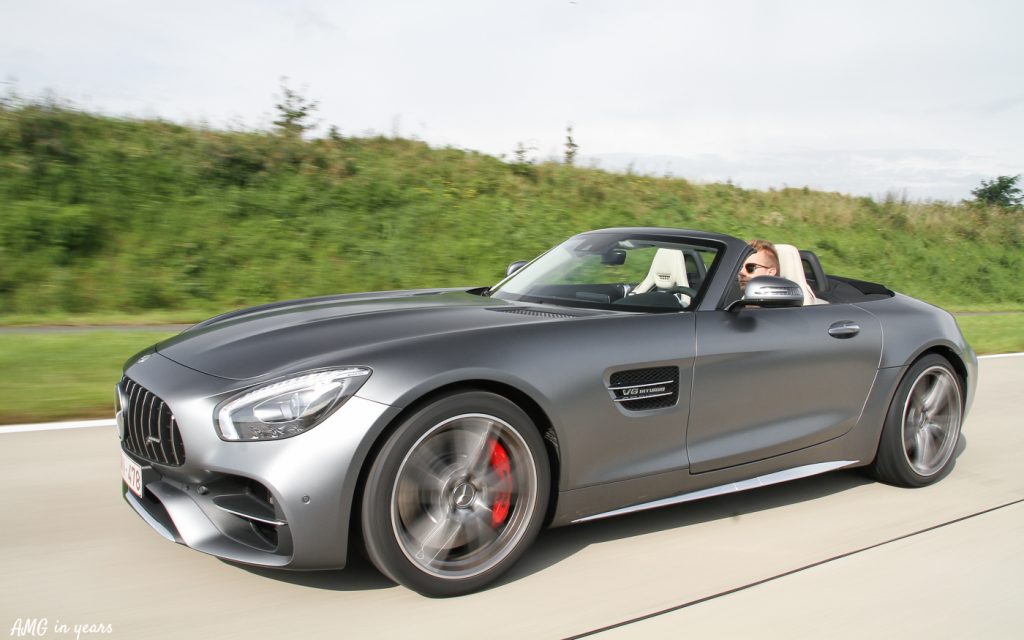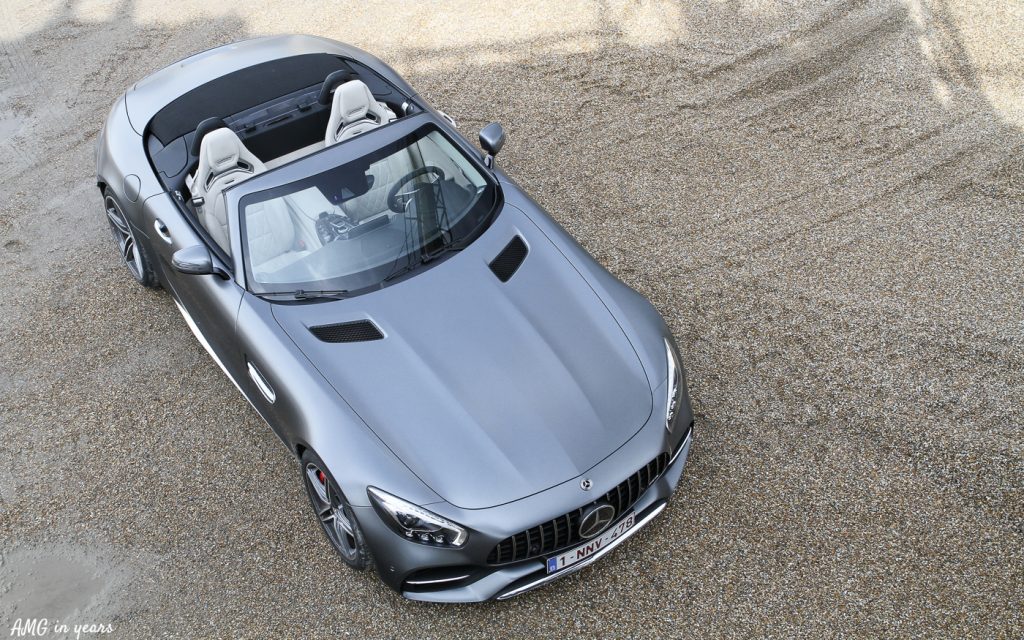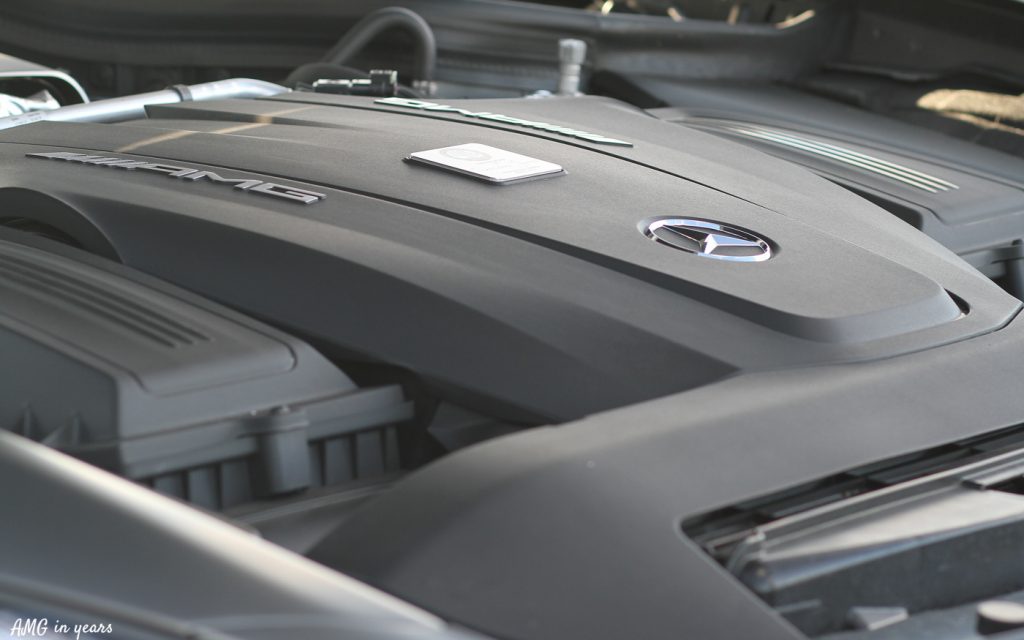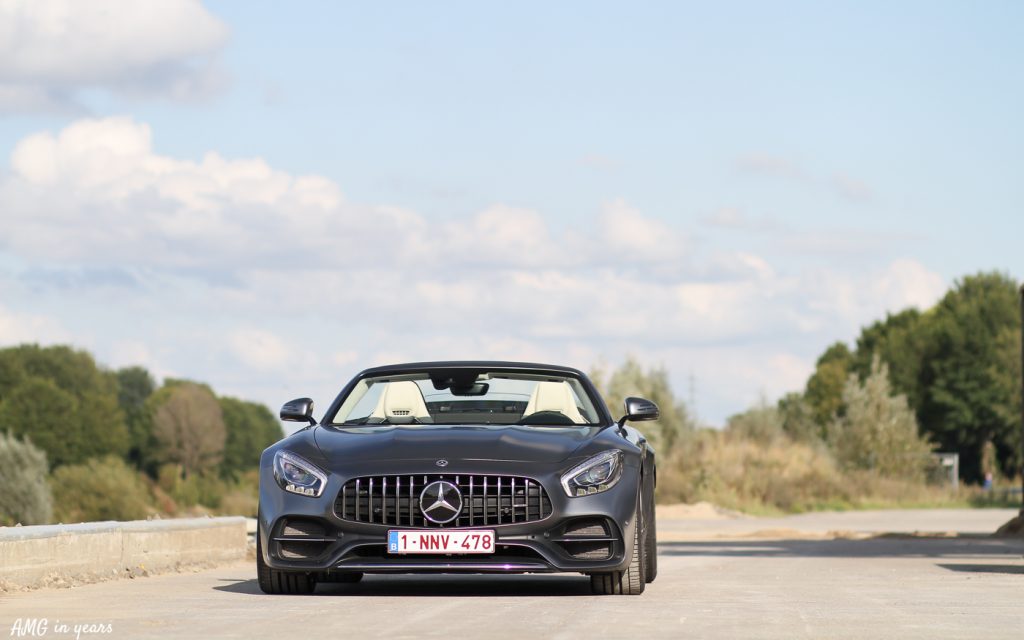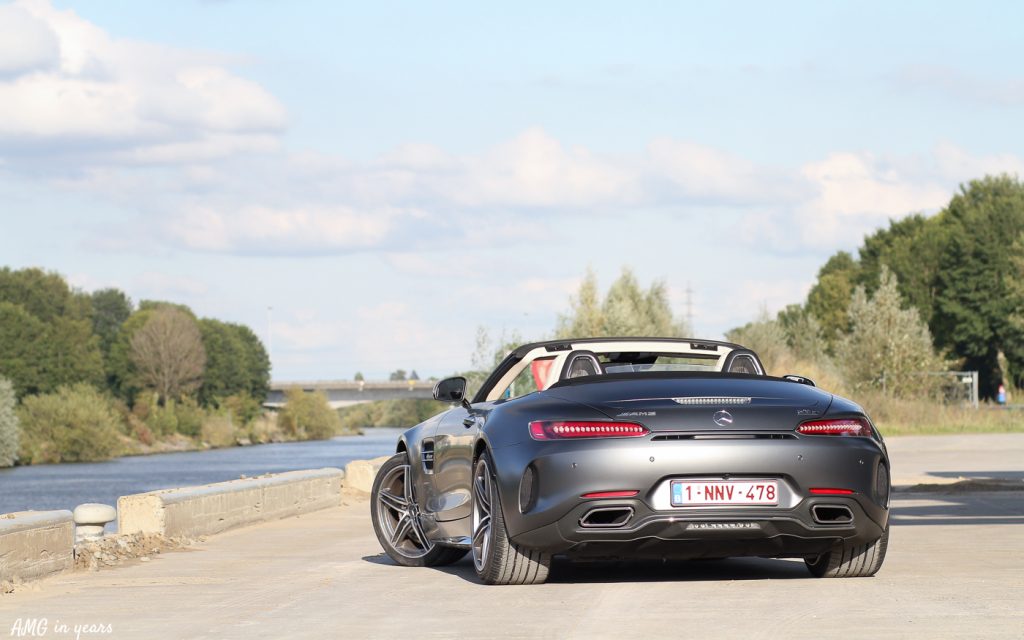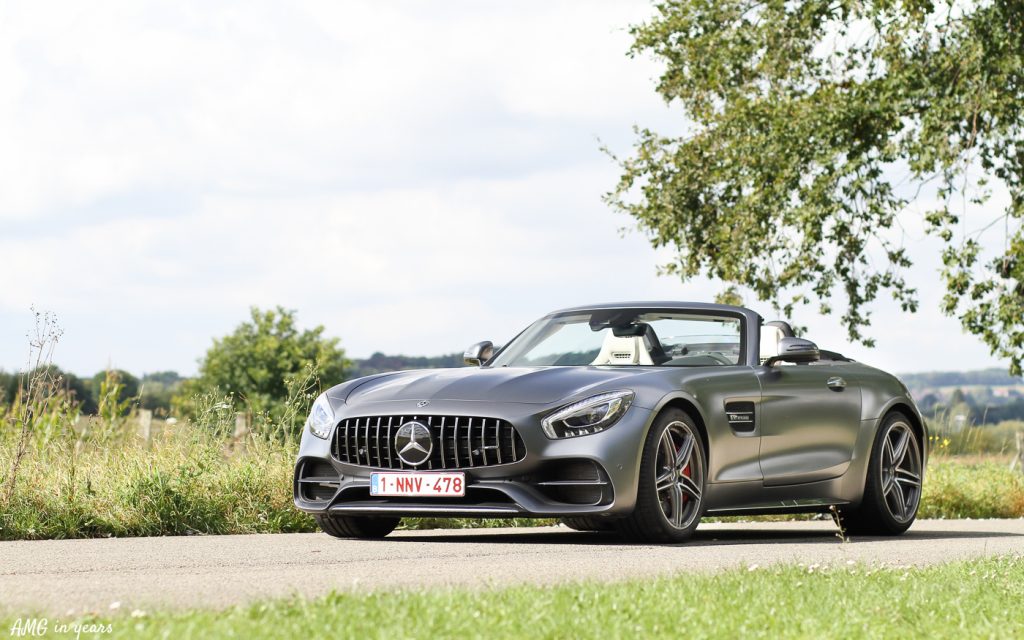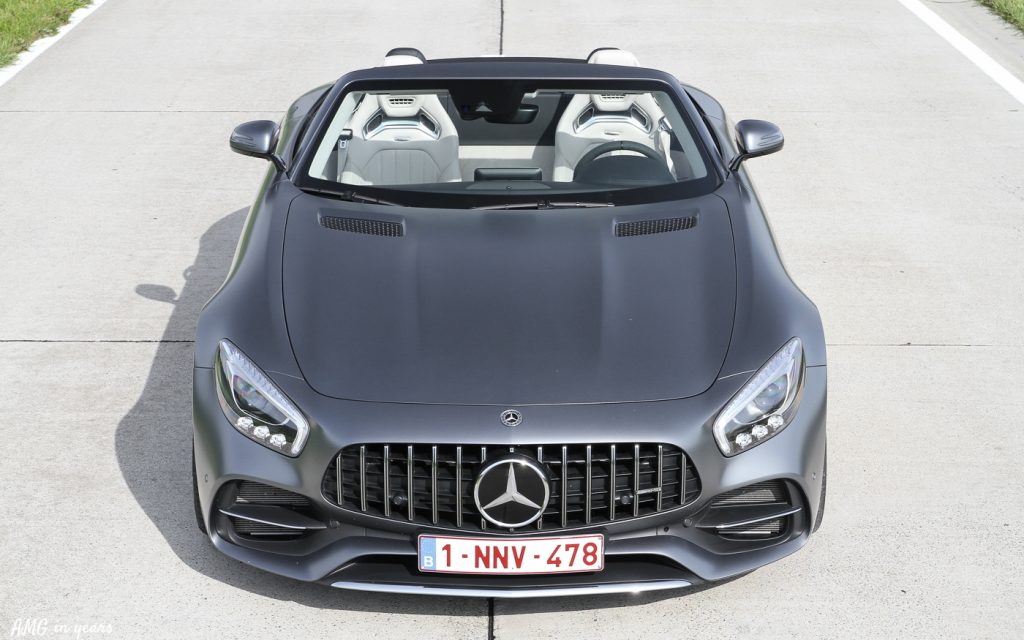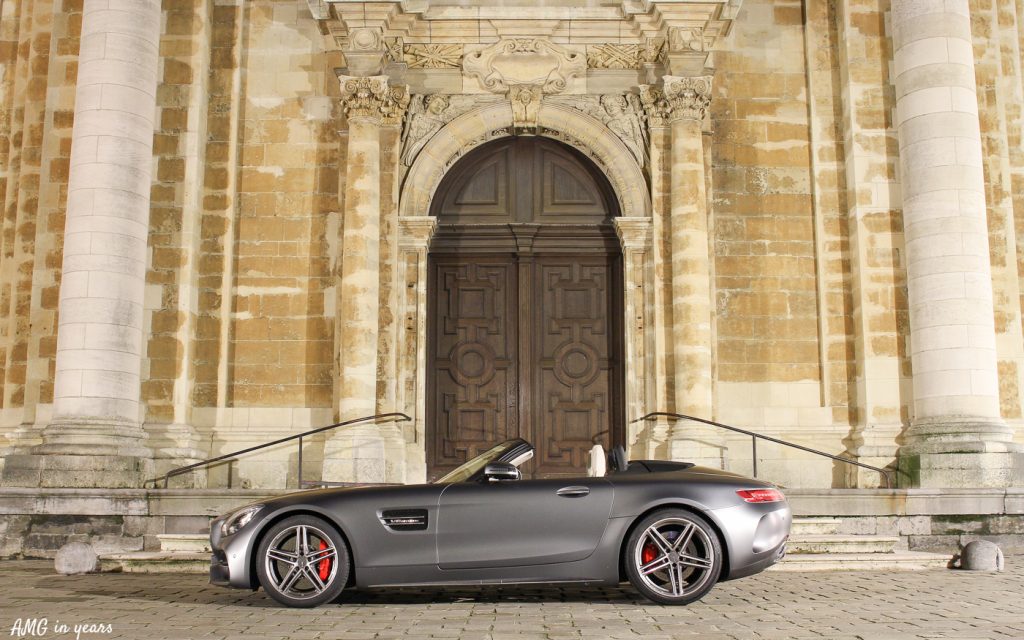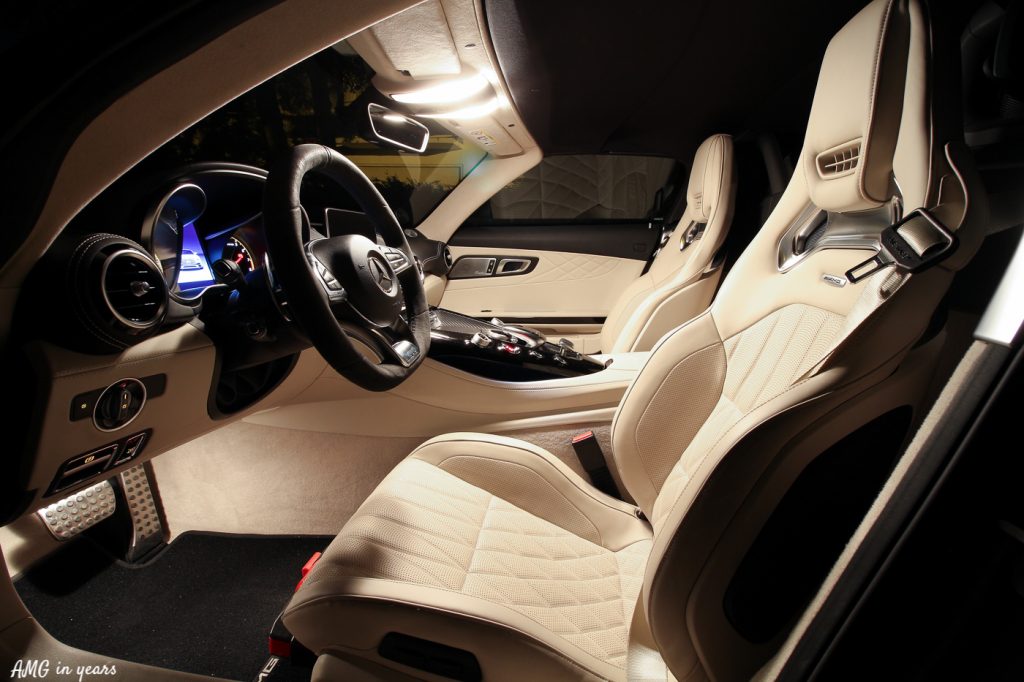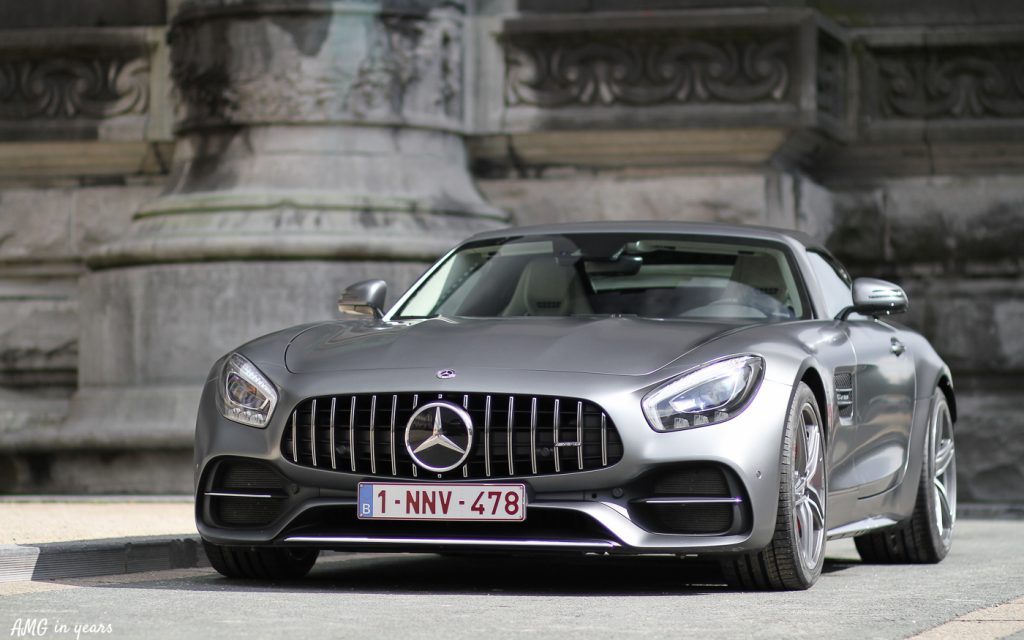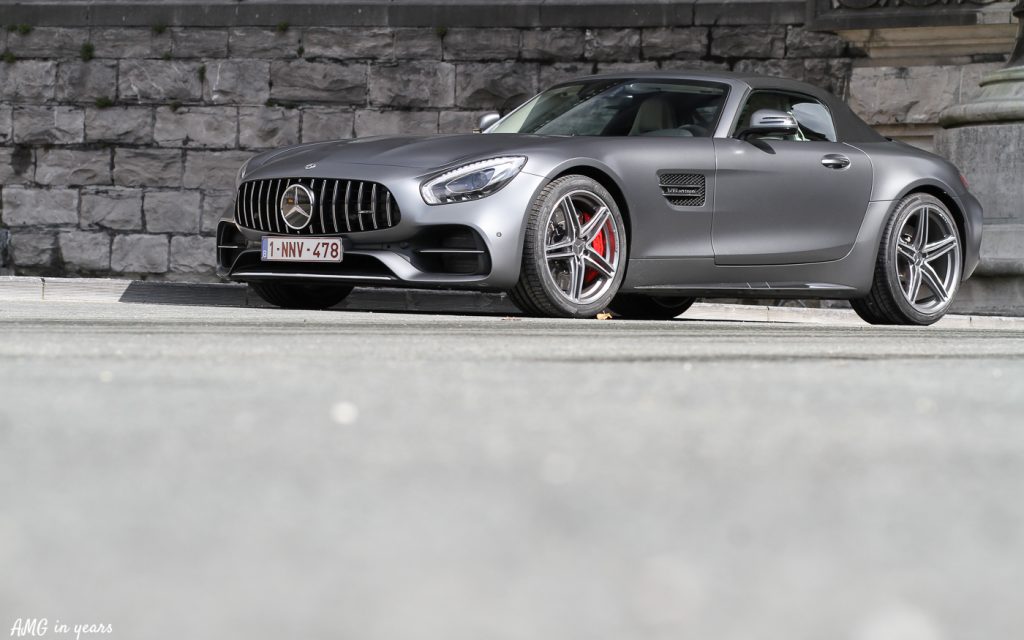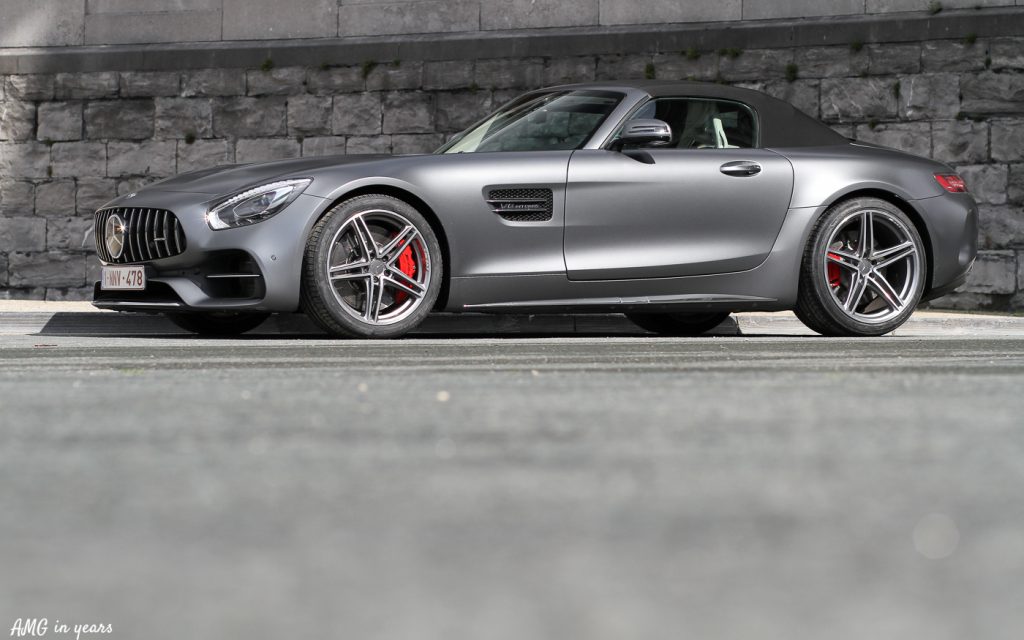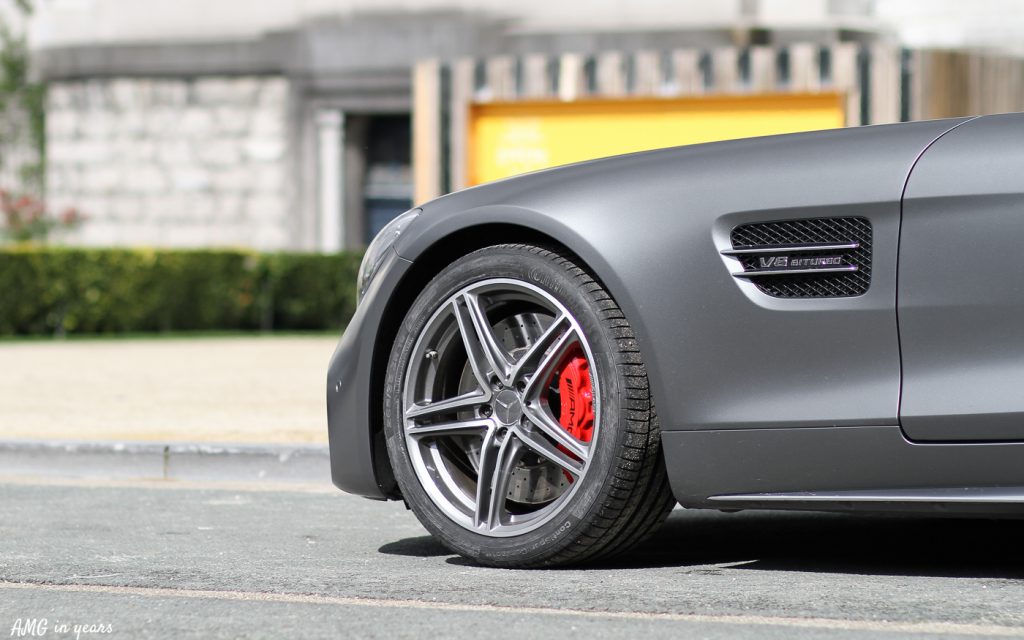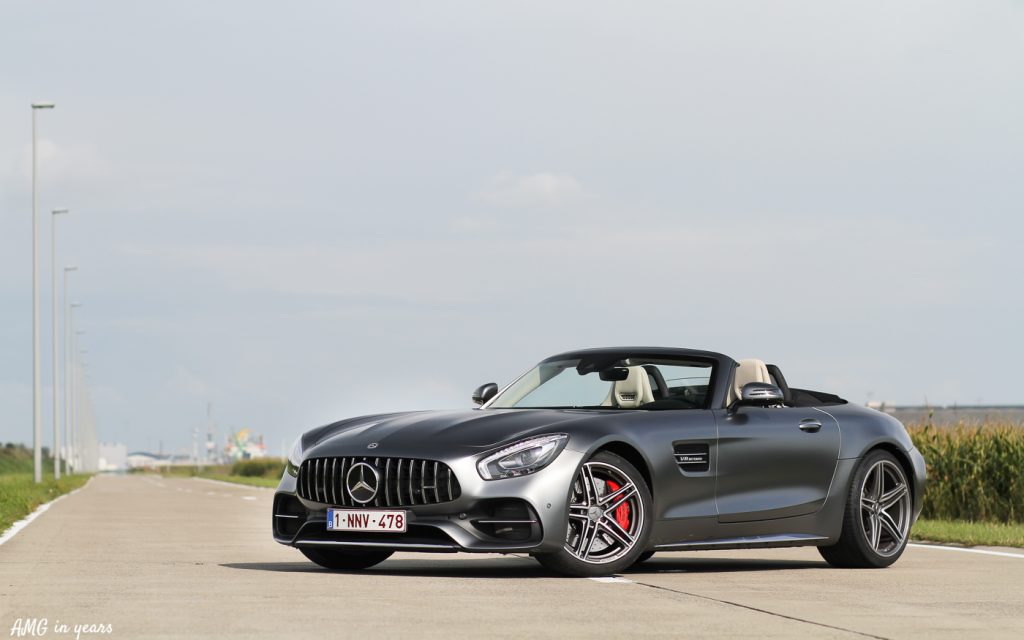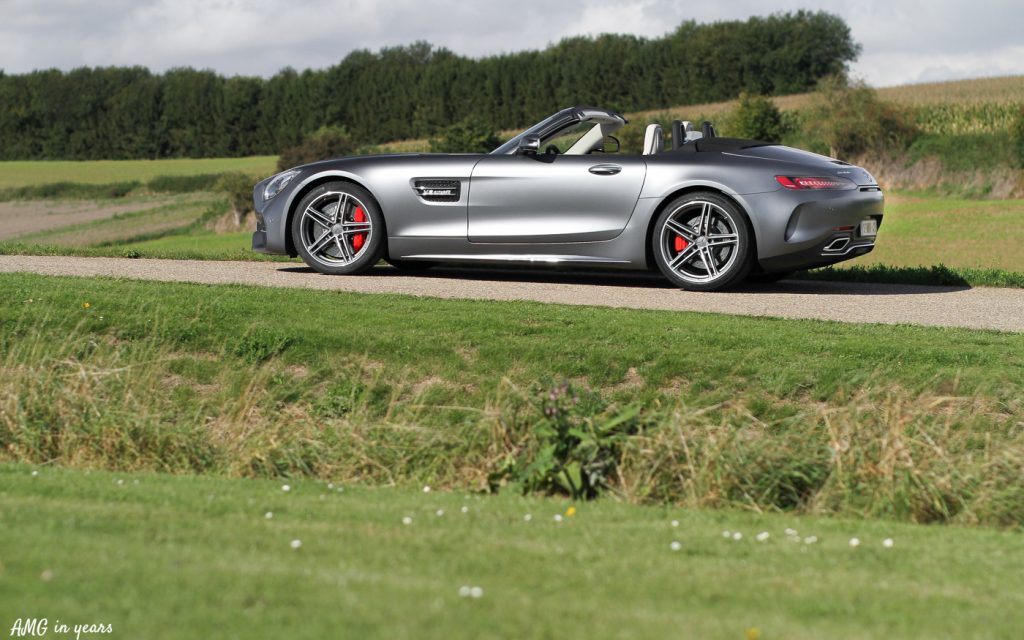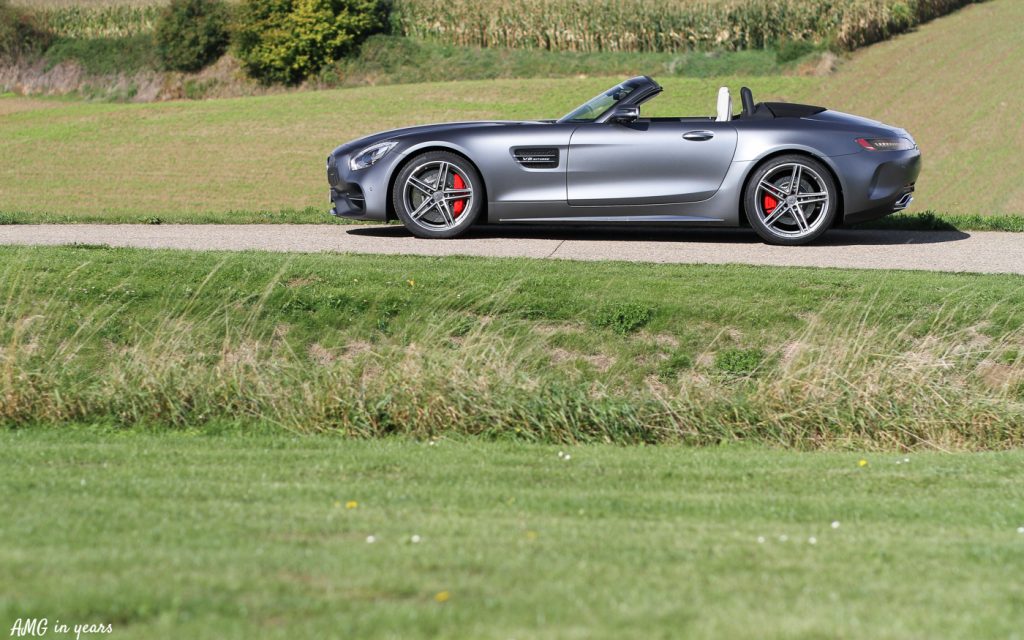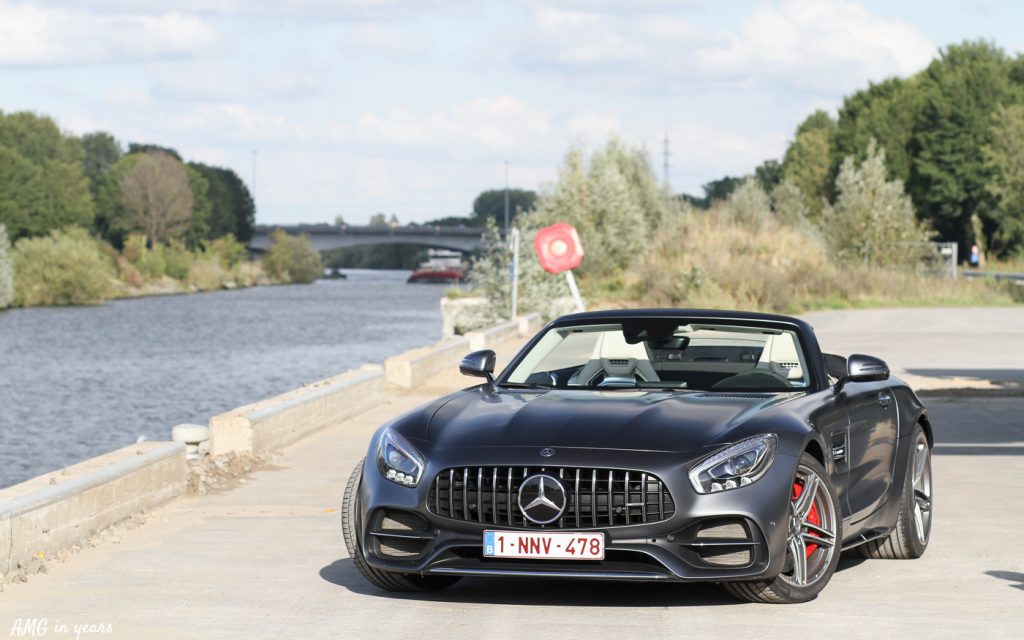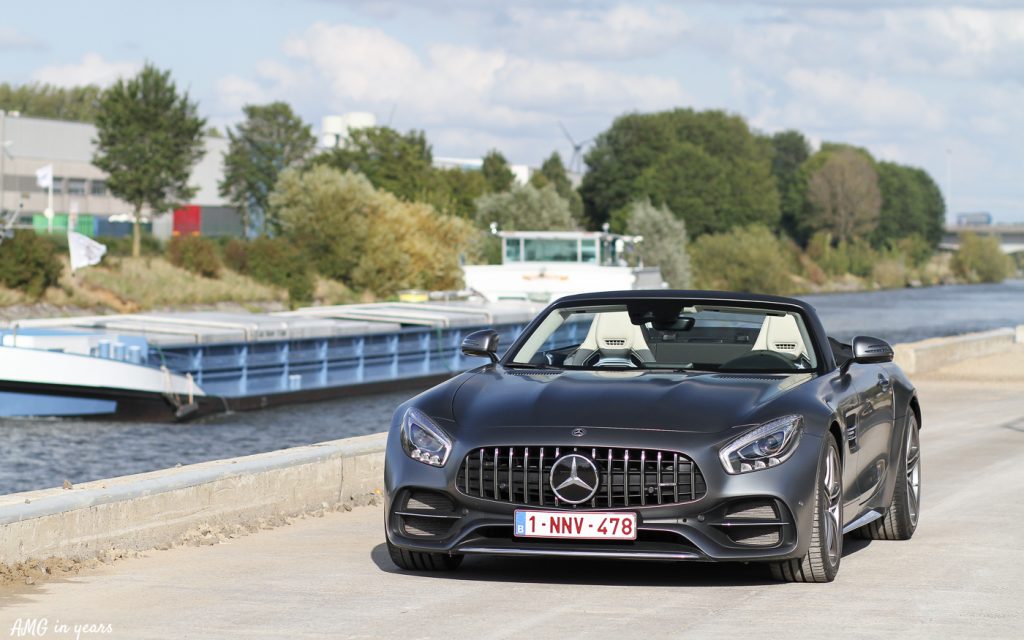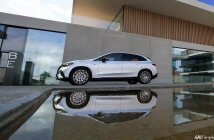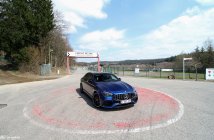There is nothing like the presence of a proper sportscar. Surprisingly Mercedes-AMG has only a limited history with sportscars. First it decided in 1999 to supply (V12) engines for the Pagani and a four years later V8’s for the Mercedes-Benz SLR which was developed by McLaren. After some years of development AMG came up with the SLS AMG, the first ever AMG not based on an existing Mercedes. After some special editions including the incredible SLS AMG Black Series, AMG developed a ‘cheaper’ successor, namely the GT. After three years AMG introduced earlier this year the convertible version and some minor changes to the overall design. With some disbelief AMG In Years had the opportunity to drive an AMG GT C convertible for a weekend. A weekend to never forget …
Confusion
There is probably a bit of confusion on the available models of the facelifted AMG GT that was introduced earlier this year. This tested GT was a GT C but C doesn’t stand for convertible. The GT convertible comes as ‘standard’ “GT” with 476 hp and in “GT C” specification with 557 hp. For the GT coupé there is even more choice with the “GT” (476 hp), “GT S” (510 hp), “GT C” (557 hp) and “GT R” (585 hp). For both the GT C coupé and convertible there’s an Edition 50 version available (if not too late yet as both are limited to 500 units). Those who are still following noticed that the power of the 4 liter V8 in the M178 GT C is very close to the power output of the GT R. It translates into mind blowing performance: 0 to 100 km/h in just 3,7 seconds and a top speed of 316 km/h!
Showmonster
Visually the panamerica grille is shouting for attention and this grille was introduced on the GT R variant, later on the convertible and coupé. Specific for the convertible is the air outtake just under the bonnet hood at the back. The combination of the matte (selenite) grey paint and the 5 twin-spoke light alloy wheels painted in matte-black high-sheen finish (front: 19 inch, rear: 20 inch) is eye catching. Cross-spoke forged wheels with fully integrated wheel bolt cover are also available. Staring eyes were not a defect, that’s for sure. Rarely drove a car that attracted so many attention of people.
For those who want to stand out even more we could advise exterior color Solarbeam yellow or Hyacinth red. Owners can also opt for an exterior Night Pack which brings black accents for the front splitter, side aprons, exhausts and side mirrors. Even more striking is the AMG exterior carbon fiber package which brings a carbon front splitter, diffuser and exterior mirror housing. All in all the GT C roadster is the perfect posterwall car. The gigantic hood reminds us of the stunning SLS of which the GT is the successor and it definitely characterizes the profile of the GT.
Airplane cockpit
AMG says it inspired itself for the AMG GT interior on the cockpit of an airplane … Compared to an airplane, the number of buttons is limited, they are just positioned widespread over the center console. There are buttons to select the driving mode, activate or deactivate ESP, put the gearbox in manual mode, activate the performance exhaust, activate the start/stop function, adjusting the AMG Ride control sports suspension (option) and another button to adjust the volume. Actually in the shape of a V8 they form the AMG Drive Unit. The buttons for the airscarf, the heated seats, the rear spoiler etc. are rather hidden below the air vents and because of that it is almost impossible to read them. The center console is partly pulled out of matte carbon. The black plastic on the sides looks good, but feels disappointing. The gearbox changer is placed too much at the back of the center console. However the ‘negative’ remarks on the interior stop there. Descending in the optional AMG performance seats with checkered stitching feels like heaven. The integrated heating, cooling and airscarf (hot or cold air blown in the neck) will make your wallet even lighter if you wish to.
The beige interior (official name: Nappa Exclusive Style macchiatobeige) of this AMG GT C gives extra ‘depth’ to the compact interior. The interior is anyway spacious and not spacious at the same time. Thanks to the width of the car you are seated quite far away from each other and also the headroom is impressive. Don’t expect to put lots of stuff behind the seats neither. The trunk is so small that even a picture cannot capture the real volume. But who cares? You will make your luggage fit whatever it will take … Moreover the content is heated for free thanks to the exhaust system. Supercar-worthy. Another plus is the low level of wind flowing into the interior when driving topless. Opening or closing the top only takes 11 seconds and can be done up to speeds of 50 km/h.
Not only the noise of the engine and the exhausts is uneven, also the surround system is well-considered. There is an external coupled subwoofer that uses the entire interior as a bass box by positioning it just above the right rear wheel in the bonnet. Personally I could even live without a surround system as the engine/exhaust sound experience of the car is anyway unbeatable.
Hammer time
Speaking of exhaust noise … It just brings the whole AMG GT C experience to the next level. Starting up the engine is the attraction of this piece of art. Moreover, the stationary noise is just extraordinary and is something that I’ve never experienced before. As standard, the GT C is equipped with the AMG exhaust performance system. In Sport+ and Race driving mode the exhaust flaps are activated permanently. The variable adjustable flaps can also be activated by a special button on the center console in Comfort or Sport driving modes. Downshifting in tunnels can bring a heart attach to people in the surrounding, however we think that Mozart would be jealous on the composed staffs. The maniacal sound is best to compare to the sound of a mitraillette or thunderstorm. Unconsciously you are sometimes heading your fingers towards the volume reduction button in some occasions, but it is just not possible to turn the volume lower. A good relationship with your neighbours may come in handy.
The maximum torque (680 Nm) of the 4 liter V8 (with two turbos inside the cylinder V-structure) is already available from 1.900 rpm. In comfort driving mode there is a quite a lag between flooring the pedal and the hammer stroke. In Sport+ mode the lag is limited to almost zero and also the shifting times of the dual-clutch AMG Speedshift DCT7 gearbox are neglectable. In case of kickdown the electronic controller skips gears instead of shifting down one by one. Next to that the gearbox is positioned above the rear axle for better weight distribution and to optimize traction. A carbon fiber drive shaft of only 3,9 kg facilitates the power transfer and makes it resistant to bending and extreme torsions. Compared to the GT the GT C has a higher first gear ratio and a lower 7th gear ratio in order to facilitate faster acceleration.
Driving
The view on the long nose is uneven. In some ways it defines a part of the driving experience as at all time you see the long nose in front of you. In contrast to a Ferrari 488, Audi R8 or Lamborghini Huracan, you are seated way behind the front wheels. The length of the nose makes it difficult to judge during parking but at least you can see a part of the starred nose. What’s remarkable is the stability of the nose under heavy braking or accelerating. Nevertheless, the throttle and braking pedal are very heavy and therefore the adaptive cruise control is very welcome for longer trips. Anyway under heavy braking you notice that the car is rather heavy (1.735 kg) but no lack of braking force.
The standard brake disc make use of composite technology to reduce weight and increase fade resistance. The front brake discs consist of an aluminium bowl and a cast iron friction ring, and make use of the floating mounting connection setup. It brings the advantage that the friction ring is able to expand independently from the brake disc bowl. It should limit axial distortion, vibrations and cracking under extreme conditions. For race track visitors there are optional AMG carbon ceramic brakes that give additional advantages under extreme hot (track) conditions and additionally make the car a bit lighter.
Those who red our previous driving tests of the C 43 AMG, the E 63 S AMG and the A 45 AMG know already that two important techniques define the driving characteristics of AMGs: AMG Ride Control and the rear-axle limited-slip differential. The AMG (double wishbone) sports suspension with adjustable damping is included in the AMG Dynamic Plus pack. AMG Ride Control allows the driver to adjust the damping characteristics to Comfort, Sport and Sport+. Do not make any illusions, activating Comfort damping mode doesn’t resist to the manifold cobbles of Bruges but at least it is bearable. The electronically controlled locking differential is standard on the GT C and improves grip levels even further. Like many other recent sportscars the GT C also has rear-axle steering. Up to a speed of 100 km/h, the rear-wheels steer in the opposite direction of the front wheels and vice versa as of speeds of 100 km/h. In practice it means a very agile steering but the differences are anyway hard to spot.
The lack of blind spot mirrors is striking and is actually a no-go taking into account the enormous hips and the low seating position. Alertness is the message. Also the painful rear view doesn’t help a lot. You can’t even spot if the rear spoiler is activated or not. Luckily there is always another solution for unsure insert maneuvers. Just push the throttle to make up for everyone and then add in … by means of speaking off course, but sometimes it works!
Conclusion
That noise! That nose! It’s the perfect summary of the AMG GT C. In a perfect world this is the car you would need to have. Personally, this is not my dream car, but the car of my dreams. The foldable roof gives an extra dimension to the AMG GT, but you will need to be able to stand all the attention. It’s just impossible to arrive or drive somewhere without people staring at you or without spotting open mouths, but maybe that’s just a matter of getting used to it. Overall the AMG GT C convertible serves everything you expect from a sportscar, at a competitive price. It was a challenge to return the keys so let’s start dreaming …
| Car | Mercedes-AMG GT C R190 |
|---|---|
| Engine | M178 4,0 l V8 |
| Horsepower | 557 hp between 5.750 and 6.750 rpm |
| Torque | 680 Nm between 1.900 and 5.750 rpm |
| Compression ratio | 9,5 : 1 |
| Transmission | AMG SPEEDSHIFT DCT 7 |
| Drivetrain | Rear wheel drive |
| Brake discs | Internally ventilated and perforated discs |
| Emission class | EURO 6 |
| Average fuel consumption (NEDC) | 11,4 l / 100 km |
| Average fuel consumption (test drive) | 13,0 l / 100 km |
| Carbon footprint | 259 g CO2 per km |
| 0 - 100 km/h | 3,7 s |
| Topspeed | 316 km/h |
| Boot | 165 l |
| Price (standard) | € 165.649 (Belgium, 21% VAT) |
| Price testcar | € 197.835 (Belgium, 21% VAT) |
| Options testcar (Prices excluding taxes) | Designo Selenite Grey Mango: € 2.200 Nappa Exclusive Macchiatobeige: € 3.000 Rear view camera: € 400 Distronic Plus: € 880 Pre Safe: € 550 Heated and acclimatized seats: € 710 Airscarf neck heating: € 650 Command online: € 2.800 DAB Radio: €440 AMG Performance seats: € 1.950 AMG Silver Chrome pack: € 950 B&O Beosound: € 4.150 AMG entry lists in carbon: € 900 Decorative elements in carbon matte: € 1.900 Keyless-Go: € 790 AMG Dynamic Plus: € 1.850 |
| Other possible options (including 21% VAT) | AMG exterior in carbon: € 4.780 Blind spot assistant: € 544 |
Special thanks to Mercedes-Benz Belgium and to Jordi & Jelle for assisting in making the rolling shots.

